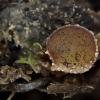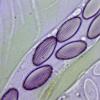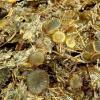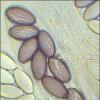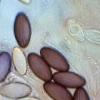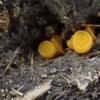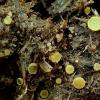
02-10-2017 04:20
Cvenkel MiranAny idea on not Xanthoria parietina part ?I think

02-10-2017 20:43
 Edvin Johannesen
Edvin Johannesen
I am very short on sordariomycete literature and s

30-09-2017 19:22
Del dia 27/09/2017 en hajas de Fagus que traje a c

29-09-2017 20:56
 Lothar Krieglsteiner
Lothar Krieglsteiner
.. also found by Jule and Millie (dogs of Sabine

28-09-2017 04:26
Ethan CrensonCollected recently in Southern Vermont (US), on a

26-09-2017 09:35
 Jean-Louis JALLA
Jean-Louis JALLA
Bonjour à tout le Forum.Hier, dans le Vallespir,
Yet another Ascobolus
Christopher Engelhardt,
30-10-2016 20:46
 today, yellowish flat cups on cow dung
today, yellowish flat cups on cow dungSpores 26-29 x 11,5-13,5 µ
see photographs
Thank you!!!
Chris
Peter Püwert,
30-10-2016 22:43
Christopher Engelhardt,
31-10-2016 07:18
Peter Püwert,
31-10-2016 10:21
Re : Yet another Ascobolus
Hi Christopher,
if one can allows to mature the Apos them also microscopic as an Ascobolus furfuraceus are recognized. Possibly in the middle Pseudombrophila coprina and Coprotus disculus are to be seen still.
Greetings Peter.
Edit: I had considered your photo too superficially, there Cheilymenia could also hide itself.
if one can allows to mature the Apos them also microscopic as an Ascobolus furfuraceus are recognized. Possibly in the middle Pseudombrophila coprina and Coprotus disculus are to be seen still.
Greetings Peter.
Edit: I had considered your photo too superficially, there Cheilymenia could also hide itself.
